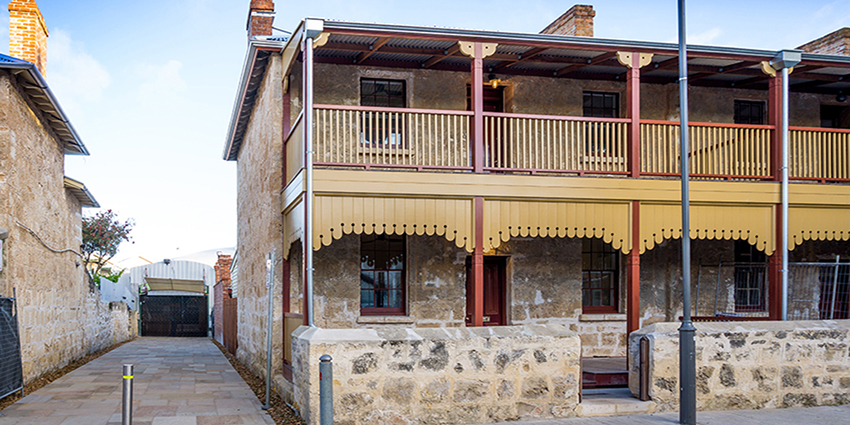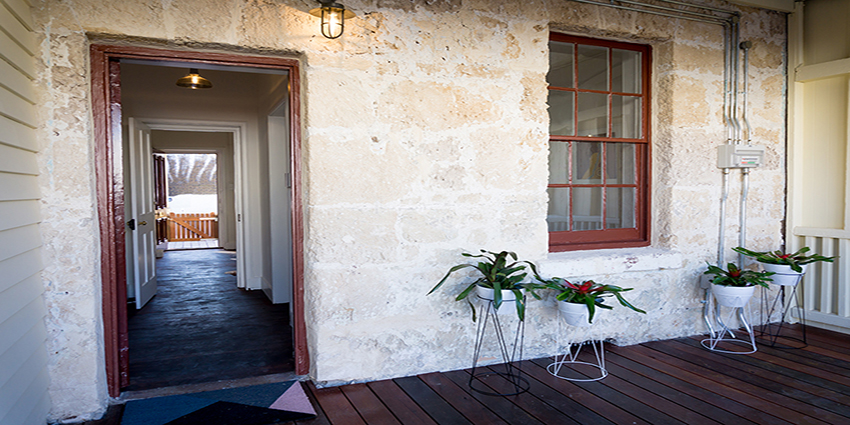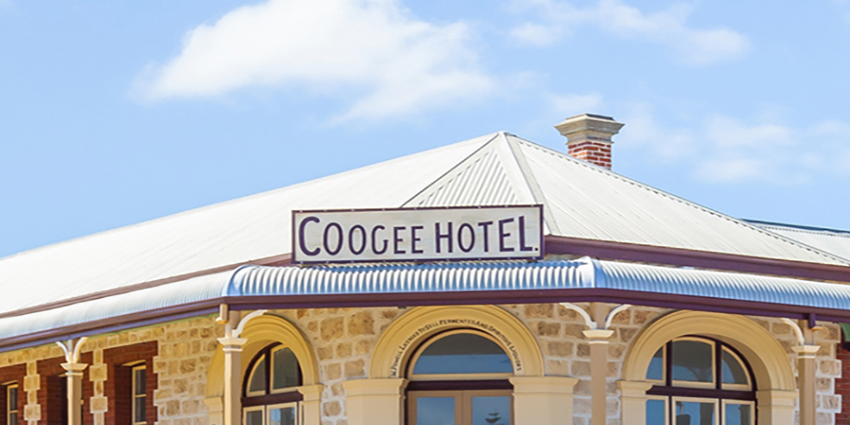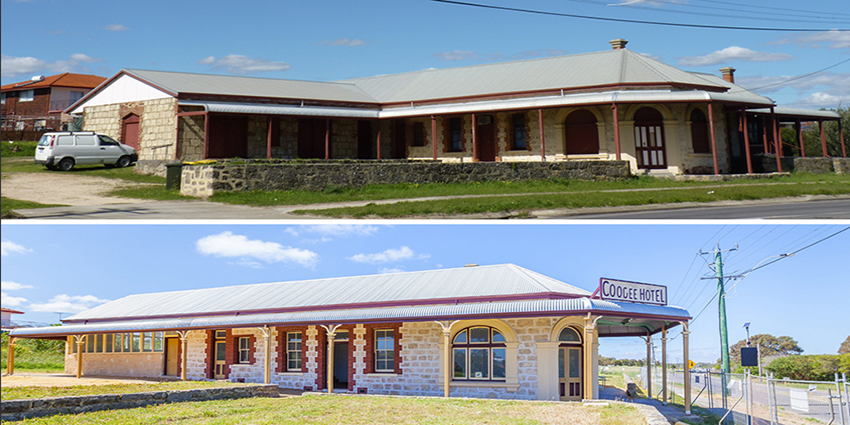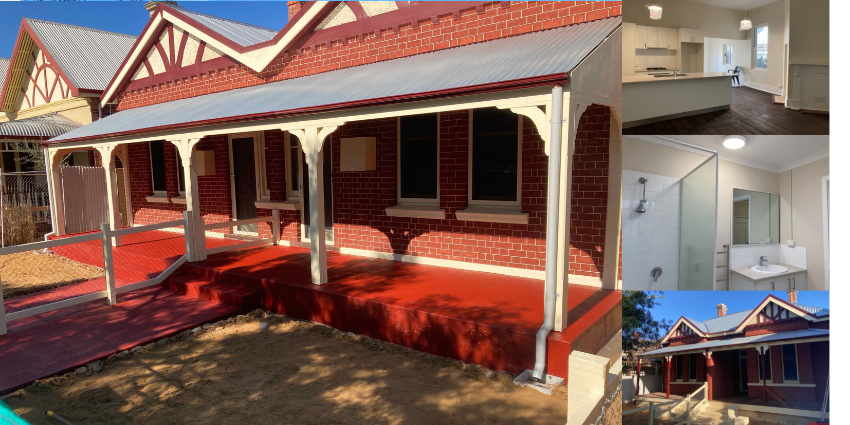The Heritage Council’s Heritage Works program aims to secure the best possible financial returns through the sale or lease of heritage places, as well as the best possible long-term adaptive reuse outcomes. This is achieved in collaboration with State Government agencies and local governments. The program has a dual heritage conservation and commercial focus.
Adapting heritage buildings requires specialised skills and a singular business focus to deal with the sometimes complex issues associated with their development.
The capital for Heritage Works projects is drawn from the Heritage Revolving Fund, a long-term secure fund to manage the proceeds of heritage asset sales and/or leases. With the first projects assisted by Heritage Works now complete, the fund has become self-sufficient.
The Heritage Works program aims to:
- develop viable options for adapting disused heritage properties
- maximise financial returns for properties being disposed of by State Government agencies and local governments
- promote and attract private investment in heritage projects
- ensure heritage places have a viable productive use so that they are conserved and well-maintained into the future
- revitalise disused properties so they contribute to the social and economic well-being of our communities.
Heritage Works provides the following services:
- feasibility analysis
- conservation planning and specification
- conservation works
- financial support where required
- project management
- government heritage property disposal process support
- marketing and sales support.
Heritage Works also assists in financing property disposal projects by underwriting the cost of a disposal project, including feasibility analysis, conservation planning, pre-sale conservation, repair or decontamination works where required, marketing and real estate services. The costs are recouped from the proceeds of sale.
Ascot Kilns and Chimneys
Show moreThe former Bristile Kilns site reflects an important part of Western Australia's rich industrial past and hosts the largest group of circular ‘beehive’ kilns and associated chimneys still standing in Australia today.
The place has a long history dating back to the early 20th century, with Pitman, Piercy & Co establishing the State's first specialised pottery works there, before it evolved into the local manufacturing site for Bristile. The kilns produced clay pipes for the construction of sewerage, drainage and stormwater systems, and terracotta roofing tiles in the later years of operations that characterise many of Perth's inter-war suburbs.
The cultural heritage significance of this rare cluster of kilns and chimney stacks was recognised with their entry in the State heritage register in 1992, followed by permanent registration in May 2020.
The Department of Planning, Lands and Heritage is overseeing the Ascot Kilns Conservation Project (the project), which involves a staged process of planning, design and works aimed at ensuring the long-term conservation of eight circular ‘beehive’ kilns, five chimneys, and tunnels.
Given the heritage value of the structures, it is important that the works are undertaken sensitively, under the guidance of experts with substantial relevant experience in heritage conservation. Local firm Hocking Heritage + Architecture has been contracted to assist with delivery of this project.
The conservation works will include, but not be limited to:
- Kiln conservation including repointing of brickwork, and replacement or reassembly of deteriorated brickwork as required.
- Conservation and structural upgrades to the chimney stacks.
- Construction of a new protective roof canopy for the kilns.
These essential conservation works are intended to stabilise and prevent further degradation and damage to the heritage assets.
The current funding does not extend to development of the site for community purposes. Beyond this, State and local government are committed to working together to develop a plan for the area that will provide opportunities into the future for the community to engage, up close, with these structures and the story of their history.
The State Government has invested $10 million in the project, which is expected to be completed in June 2024.
The project is expected to generate significant economic activity, including contracting and employment opportunities.
To keep updated about key project milestones, please register to receive Community Updates by emailing ascotkilns@dplh.wa.gov.au
Related links
- Media statement - Hard hats meet heritage as works set to begin at Ascot Kilns
- Media statement - Heritage specialists awarded contract for Ascot Kilns conservation
- Media statement - Call for expert team to rekindle historic Ascot Kilns
- Landmark Ascot brick kilns receive permanent heritage listing (mediastatements.wa.gov.au)
- Draft Ascot Kilns development plan
Warders’ Cottages, Fremantle
Show moreThe State heritage-listed cottages were built more than 165 years ago to house prison warders employed at the Convict Establishment, now known as the World Heritage-listed Fremantle Prison.
Located in Henderson Street next to the Fremantle Markets, the cottages are a highly visible and important part of Fremantle’s CBD.
The three sets of terrace housing, occupying 3,544 square metres, continued to be used by warders up until the Prison’s closure in 1991. The cottages were then purchased by the Department of Housing for public housing.
In 2011, the Department of Housing determined that the cottages were no longer suitable for its tenants.
The Heritage Council of WA assumed ownership of the cottages in 2015 and commenced conservation of these cottages so they will once again contribute to the vibrancy of central Fremantle.
The State Government has invested $3.3m in the restoration of the cottages which has involved the removal of paint from the external limestone walls, allowing the stone to breathe and dry out. The structural integrity of the cottages has been restored through the overhaul of onsite drainage and the refurbishment of important joinery, door and window frames.
The cottages are suitable for private residential use, but can also be sensitively adapted into small offices or other commercial premises.
The Department of Planning, Lands and Heritage (formerly the State Heritage Office) acknowledges the generous support from Smeg Australia, Living Edge and Mossenson Galleries in the quality fit-out and furnishing of the display Warders’ Cottage at 17 Henderson Street, Fremantle.
Coogee Hotel and Post Office
Show moreAs an attractive seaside destination, it was close to both Perth and Fremantle and offered a convenient resting point to travels further south.
The hotel and post office are all that remain of a thriving social and retail precinct and destination for visitors, holiday makers and the Coogee community from the 1900s to the 1920s. The precinct comprised a railway station, two racecourses, the popular family beach and the hotel, with the adjacent post office and store built in the 1920s.
For nearly 40 years, the former hotel was run by the Anglican Church, firstly as a children’s holiday camp during the depression years, and later, as a children’s home after World War I until 1968.
The State Heritage Office has invested nearly $500,000 in conservation works, site maintenance and planning. Works have been completed to remove intrusive additions to the hotel and post office buildings, followed by repairs to stonemasonry, verandah and joinery.
The works have reversed previous unsympathetic repairs, and now present the place in sound condition for a new era of active use.
Today, the former Coogee Hotel and Post Office is owned by Main Roads WA, which no longer requires the buildings.
The conservation works has prepared the former Coogee Hotel and Post Office site to be adapted for a range of commercial or residential uses compatible with its location.
Parry Street Precinct conservation works
Show moreThe Department of Planning, Lands and Heritage had an agreement with the Department of Communities to procure and contract manage conservation works to seven vacant cottages in Perth’s Parry Street Precinct.
The brick and iron Federation style buildings date back to the early 20th century and are part of the Parry Street Precinct, located in the east end of the Perth CBD.
The precinct is recognised on the State Register of Heritage Places for its cultural significance as a rare example of a relatively intact streetscape of late nineteenth century and early to mid-twentieth century buildings. The area reflects the expansion of residential development on the city fringes, driven by the population boom that was generated by the 1890’s gold rush.
FAQs
What did the conservation project involve?
The scope of building works varied from house to house, but generally included:
- Urgent structural work, including repairs to verandahs
- Reinstatement of missing and deteriorated brickwork, raking out and repointing
- Refurbishment of doors, windows, floors and ceilings
- Removal of termite-damaged timber framing and reinstatement of new framing and cladding
- Fire separation to party walls and new hydraulic and electrical services
- Strengthening of roof structure and chimneys, removal of acrylic paint to front facades and tuckpointing repairs
- New roof sheeting and new ceilings
- Removal of vinyl and carpets, repairs to floorboards, sand and oil finish
- Kitchen, bathroom, and laundry fit out, and internal painting throughout
How much did the project cost?
The conservation works were valued at just over $3 million and were jointly funded by the Department of Communities and through the WA Recovery Plan economic stimulus program.
What are the benefits of these conservation works?
Preserving the heritage aspects of these buildings was important as they are an integral part of the Parry Street Precinct and contribute to the character and heritage value of the area.
The project generated significant local employment and contracting opportunities, and the refurbished dwellings will be used for social housing, providing a home and stability for eligible tenants.
The improvements enhance the overall streetscape and are expected to boost community safety by reducing opportunities for anti-social behaviour, vandalism, and other undesirable activities.
How can I find out more?
For enquiries about the conservation works only, you can get in touch with the project team on 6552 4131 or email marlise.dossin@dplh.wa.gov.au. All housing enquiries should be directed to the Department of Communities.



